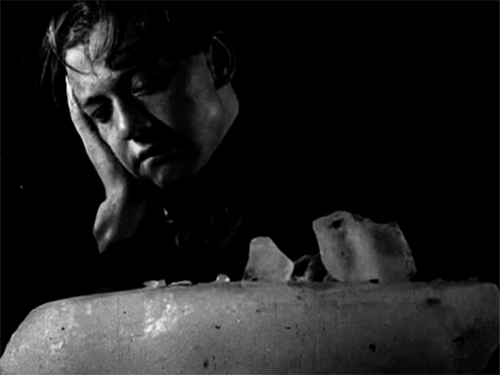
During a political demonstration at the foot of the Yser Tower, a young man working as a butcher commits an act of rebellion that is brutally suppressed by the authorities. The demonstration of the Flemish Movement at Dixmude was an actual event that Dekeukeleire incorporated into a narrative leading to a stylized account on suppression.
“Although Dekeukeleire’s fourth film is often called Flamme blanche, its actual title is in Flemish, Witte vlam. (Dekeukeleire was of Flemish ancestry, but this is the only ‘Flemish’ film of the four experimentals.) The filmmaker called this work ‘a look backward,’ since it lacks the radical experimentation of Impatience and Histoire de détective. Here instead a considerable influence from Vertov and Eisenstein is apparent, with ‘Russian’ framings and cutting dominating the non-documentary portions. The narrative concerns a peaceful demonstration by the Flemish People’s Party at Dixmude, an actual event which Dekeukeleire filmed. To this he adds a specific story line about one of the demonstrators, a butcher who is injured when police ride through the crowd. He flees to his home and is subsequently arrested while hiding in the barn. The ‘white flame’ of the title refers figuratively to the immense white banner which moves in the wind in the demonstration scene and final shot. Dekeukeleire described the title as the ‘poetic equivalent of pure revolt’.”
Kristin Thompson1
- 1Kristin Thompson, “(Re)Discovering Charles Dekeukeleire”.

